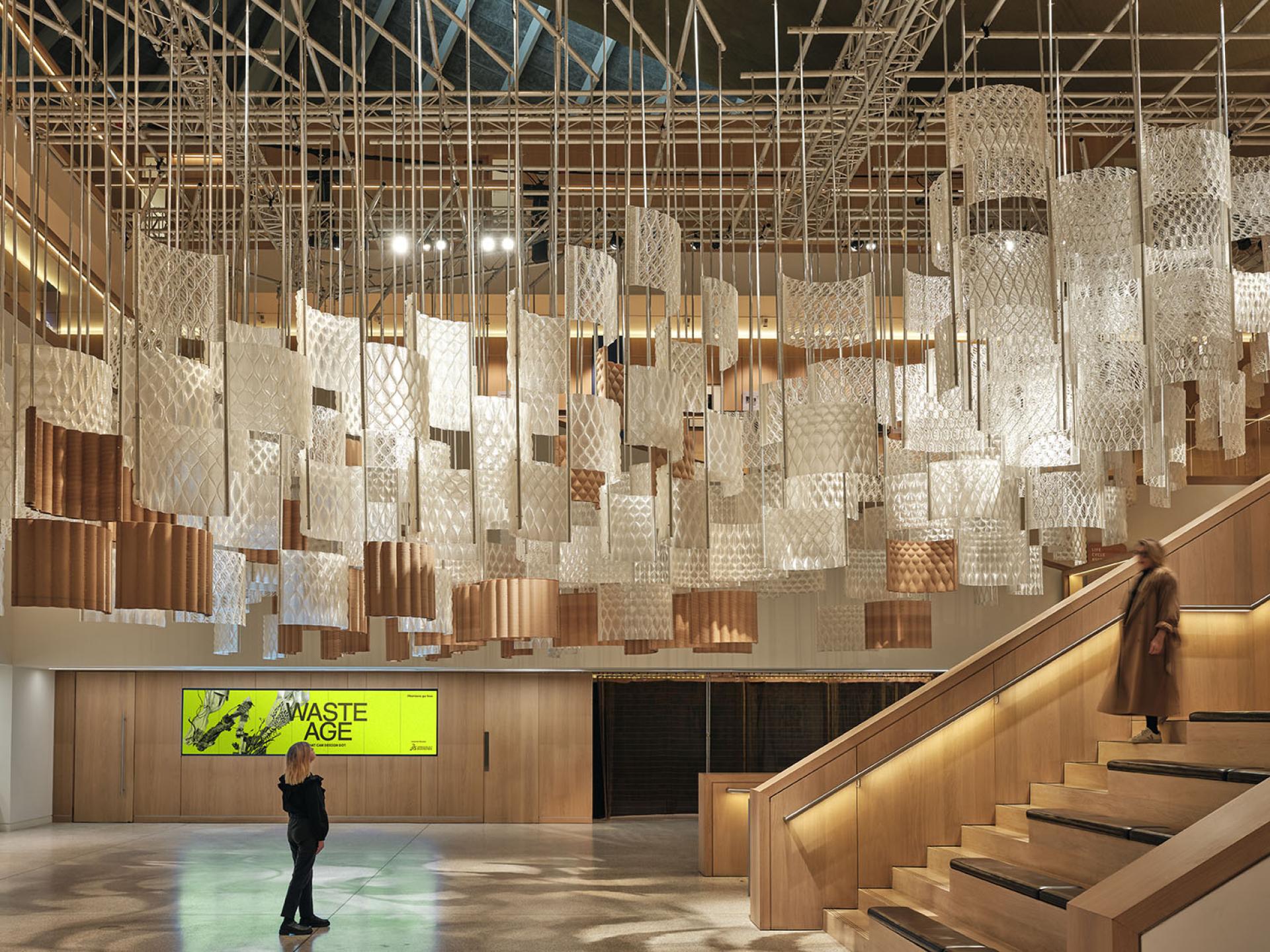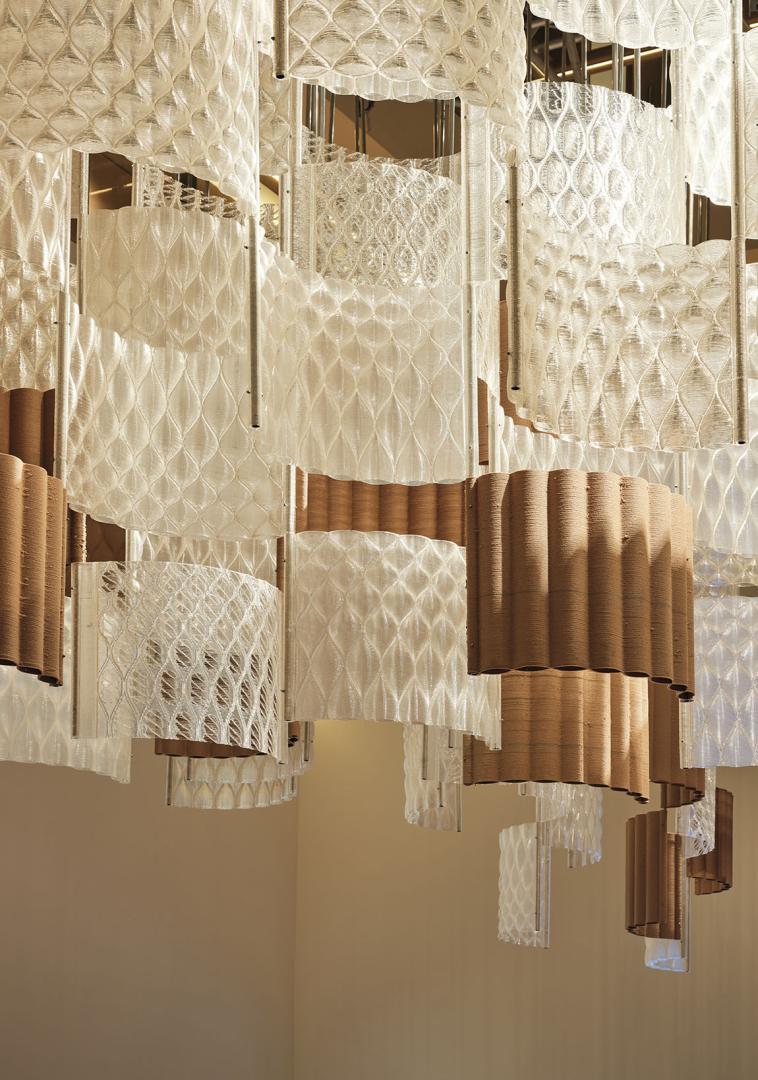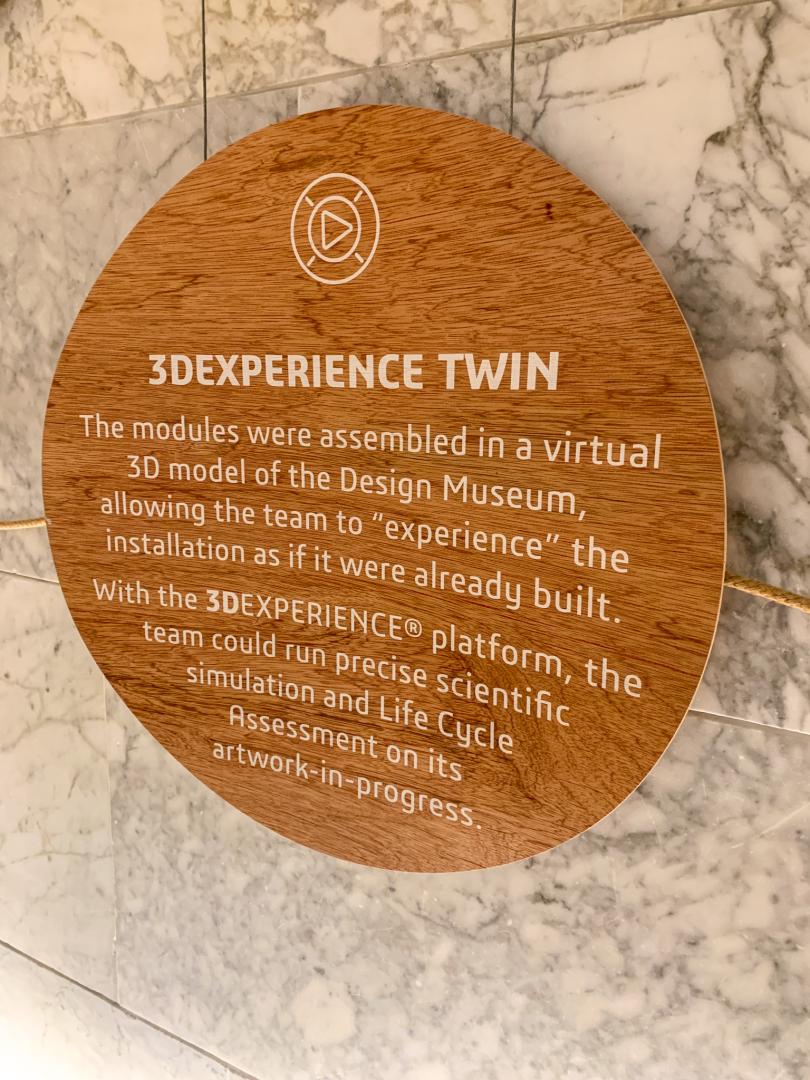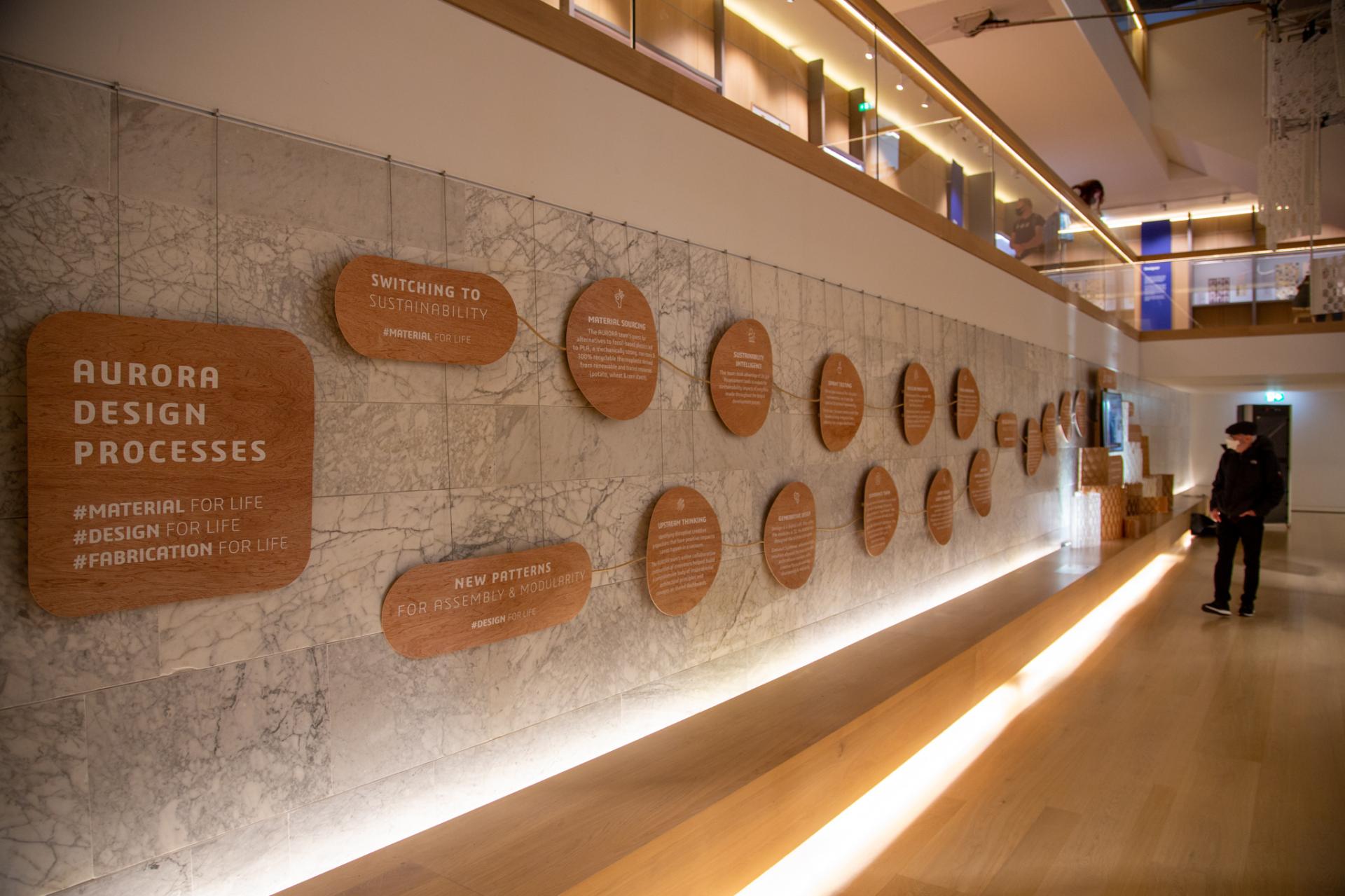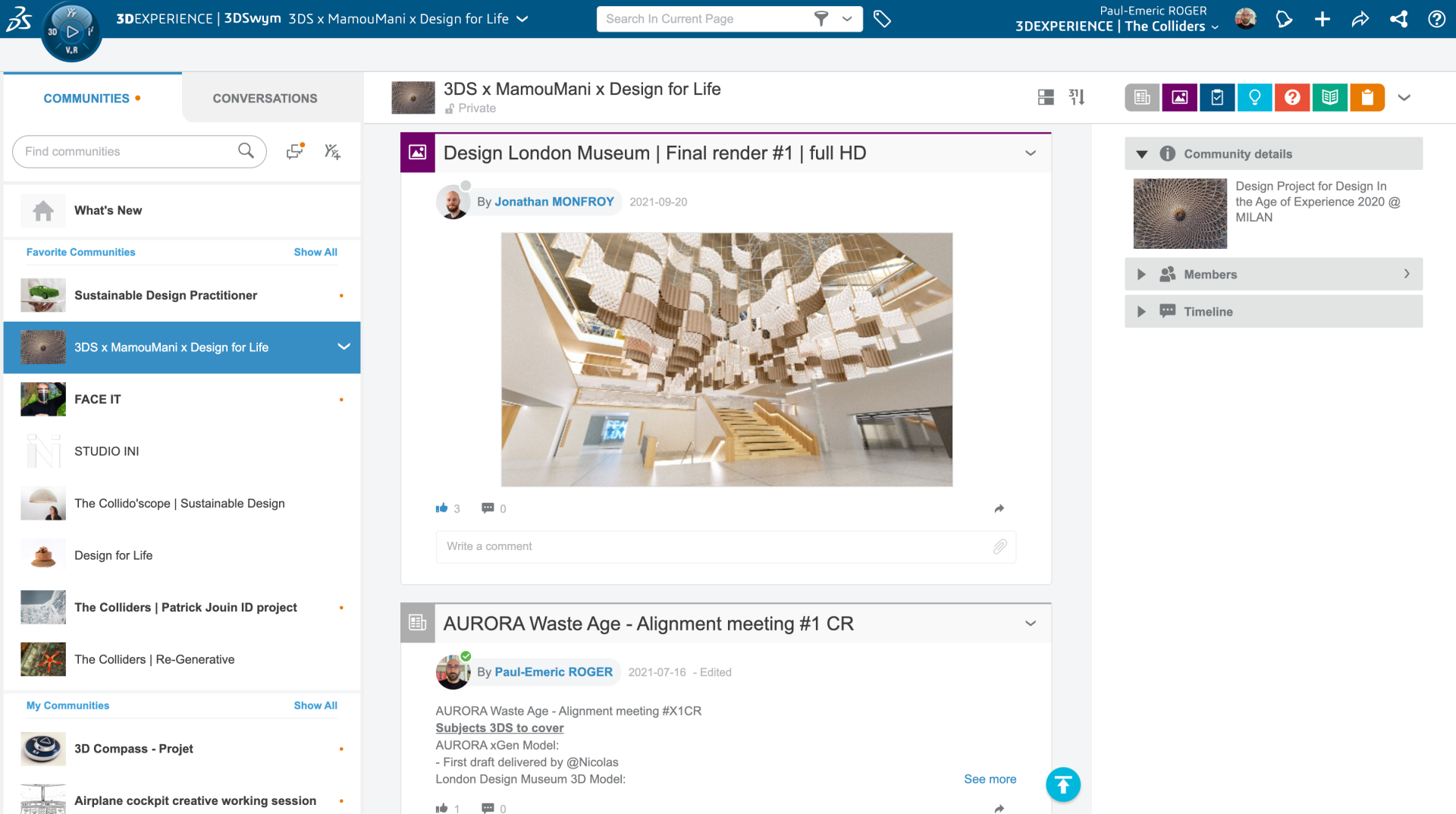Design in the Age of Experience - AURORA
Basic information
Project Title
Full project title
Category
Project Description
Design in the Age of Experience - AURORA unites world-leading designers, artists and architects to re-envision the design process for a sustainable world.
In partnership with renowned London architect Arthur Mamou-Mani and inspired by his focus on sustainable construction, we approached Aurora not as an object, but as an optimized “Design for Life” approach.
Aurora – manifesting the convergence of art, science and industry, united and empowered by technology – inspires a new aesthetic for a
Geographical Scope
Project Region
Urban or rural issues
Physical or other transformations
EU Programme or fund
Which funds
Description of the project
Summary
Dassault Systèmes’ 3DEXPERIENCE® platform is the catalyst for uniting designers, artists, scientists and makers in a dynamic process of renewable innovation. By collecting and displaying knowledge from multiple disciplines via virtual twin experiences – scientifically accurate simulations of objects and the world in which they will exist – the platform provides a space for creative collaboration. A “creative plateau.”
We believe that developing creative plateaus are critical to crafting humanistic story-telling for an Industrial Renaissance that actively cares for life and the Planet. Combined, multiple plateaus articulated around purposeful “research in action” programs will give birth to a collective production of imaginaries shared by industrials, artists, scientists… ultimately creating a fruitful novel cultural framework.
With this in mind, Dassault Systèmes’ Design Studio runs a program called COLLIDERS, a community keen to engage in collaborative and sustainable innovation powered by a creative dialogue between man and machine. On the 3DEXPERIENCE® platform, designers & architects can work together, resulting in projects that are enriching, beautiful and sustainable, actively contributing to a New Green Deal.
AURORA is one such proof-of-concept. The installation was born out of a collaboration between Dassault Systèmes’ Design Studio & Arthur Mamou-Mani, a forward-thinking architect who is passionate about parametric design, experimentation, digital fabrication and sustainable architecture.
The installation’s unveiling coincided with the UN Climate Change Conference (COP26) in October 2021. AURORA manifests the convergence of art, science and industry, united and empowered by technology, inspiring a new aesthetic for a renewable world. A new dawn for sustainable innovation… by design.
This is one example of the potential of the COLLIDERS creative plateau. Our community is open to more contributors and programs, as part of the New European
Key objectives for sustainability
As the focus of design shifts from product to experience and ultimately to sustainable design, we aim to define and propose a scalable and shareable design process, a “sustainable design practitioner.” Our COLLIDERS “research in action” programs are geared around our conviction that informed design processes will help reduce the environmental footprint of human activity.
Dassault Systèmes’ 3DEXPERIENCE® platform integrates Life Cycle Assessment capabilities combined to real-time virtual twin technology, providing much-needed metrics & insights in order to evaluate environmental impacts across the product life cycle early on in the design and development process, effectively weaving sustainability into the entire value network.
This allowed us to monitor eight indicators from the EF 3.0 methods to assess the Environmental Footprint of AURORA.
- Climate Change Reduction
- Minerals & Metals Preservation
- Reduced Respiratory Effects
- Reduced Carcinogenic Effects
- Reduced Acidification
- Reduced Water Use
- Reduced Land Use
- Reduced Fossil Fuel Use
The AURORA use case demonstrates the principles of circular architecture using a material that can be bio-sourced, 3D-printed, crushed, reprinted, and is industrially biodegradable. Identifying PLA (Polylactic Acid) as the project’s main material was the driving force of the project, as circularity was essential.
Using the 3DEXPERIENCE platform, the team designed the exhibit’s components and location as virtual twins – scientifically accurate 3D computer models. This virtual twin experience easily allowed for experimentation in arranging the modules and suspension structures, resulting in a design that was beautiful, structurally sound, safe for people to walk beneath and feasible to assemble and disassemble (another essential driver for circularity).
This is a powerful demonstration of Dassault Systèmes’ Design Studio regenerative “Design Thinking” approach to truly collaborative and circular product cre
Key objectives for aesthetics and quality
Experience is at the heart of the Design Studio’s mission. Live-rendering capabilities on Dassault Systèmes’ 3DEXPERIENCE platform allowed the AURORA team members to view the virtual twin from different angles in different lighting, varying the textures and mixture of opaque and clear materials.
As a result, the AURORA installation is an awe-inspiring, semi-transparent cloud of 375 3D-printed, bio-sourced modules, seemingly floating, and flooding the floor with a mesmerizing play of light and shadow.
Beyond its obvious elegance and beauty, AURORA has been conceived as a journey for visitors (citizens, professionals, industrials) inviting them to embark on a transformational journey towards sustainability.
As expressed by the architect Arthur Mamou-Mani:
I'd really love people to get lost in in the space, think about what they have in front of them, slowly learn about it, as different layers unravel incrementally.
It's a really great sensation when you go through a place and don't fully understand what's going on. I love the idea of letting go, as it helps people be more open to learning, their convictions slowly disrupted by the idea of gradual discovery and not fully understanding the complexity that's ahead. It's the same feeling when you're in a forest: there are so many elements and it works at so many different scales. That process of discovery in nature is a similar process I try to recreate with the installations.
I like projects that are at human scale so that the elements that compose a larger picture are something humans can relate to. The movement that we create fosters relationships between elements. The project becomes more of a system rather than a form. And so that pushes visitors to think playfully. Could it be something else? Can I move it? Can I change it? Can I reconfigure it? And I think that's part of helping people understanding that they're actually quite creative.
Key objectives for inclusion
Inclusivity is essential to our approach. It was one of the five megatrends we identified that have a direct impact on our quest for a more sustainable future:
Complexity
Sustainability
Ubiquity
Science & Generativity
Inclusivity
Our creative plateau on Dassault Systèmes’ 3DEXPERIENCE platform offers the space for active participation, convergence, engagement, and inclusivity. We aim to foster participants’ entrepreneurial spirit and ability to actually design and act on their lives and environments, in true New Green Deal spirit.
Design is a systemic process. It calls on human creativity, diverse expertise, knowledge and know-how from committed individuals. Trans-disciplinarity and ubiquity resonate with the growing demand for more open, participative collaborations that need to occur anytime, anywhere around the globe, to tackle complex problems and design for a better world.
This collaborative approach was all the more necessary as the COVID pandemic hit and lockdown forced teams to transform their work life. Dassault Systèmes’ Virtual + Real approach proved efficient in this context, and is replicable in other settings: working places, schools, territories… or a combination of public and private actors.
One of our COLLIDERS is AURORA’s architect Arthur Mamou-Mani. He actively favors experimentation within his studio, fostering iterations and synergies between the studio’s designers, makers and technologists. He adopts the same open approach with the students he teaches and creates fantastic projects with. His motto? Everything is design and everyone is creative.
Results in relation to category
MATERIAL FOR LIFE
Material Sourcing Our quest for alternatives to fossil-based plastics led us to PLA, a mechanically strong, non-toxic & 100% recyclable thermoplastic derived from renewable and traced resources.
Sustainability intelligence We took advantage of Life Cycle Assessment tools to evaluate the sustainability impacts of every choice made throughout the design & development process.
3D-Print Testing From the start, we embraced the inevitable printing irregularities, celebrating their unique aesthetics.
Molecular Analysis PLA demonstrates similar mechanical strength and plasticity but requires less energy to produce, thanks to a lower melting temperature.
Material Rendering We could refine lighting & textures early in the design process.
DESIGN FOR LIFE
Upstream Thinking We reached out to our online collaborative communities of innovators to build a comprehensive body of inspirational architectural concepts on shared dashboards.
Generative Design For us, design is a digital craft. After crafting the modules in 3D, we went on to design the larger architectural system.
3DEXPERIENCE Twin The modules were assembled in a virtual 3D model of the Design Museum, creating a virtual twin experience of AURORA. With the 3DEXPERIENCE® platform, we could run precise scientific simulation and Life Cycle Assessment on our artwork-in-progress.
Airflow & Physical Simulation Aesthetics and functionality work hand in hand. We simulated the airflow around the structure to ensure a safe and enjoyable experience for visitors.
FABRICATION FOR LIFE
Reuse and Repurpose Our community of makers and designers is working on ways to repurpose modules and allow them to continue delivering value.
Crush & Reprint also Remarkably, PLA can be 3D printed, crushed and printed again…
Compost - A new dawn PLA is a natural material that also is industrially composted.
How Citizens benefit
We consider the creative plateau (such as COLLIDERS) to be a model to empower people everywhere, as well as facilitate creativity in territories, corporations, education, labs and starts-ups. They enable the transmission of vision, knowledge and know-how to a diverse audience.
Projects such as AURORA are designed for museums and public places, with the express intent to provoke interactions and reactions from citizens, children, students, families, and help transform our view on the world and our practices.
AURORA was indeed first installed in the atrium of the Design Museum in London, a free-access area open to a diverse audience, from school children to professionals. The Design Museum was at the time hosting an exhibition entitled “Waste Age: What can design do?” showing what design can do to tackle the critical problem of waste and its environmental consequences across the globe. The exhibition was intended as a call-to-action to designers across all disciplines and went hand in hand with a campaign entitled #EndtheWasteAge, including a series of workshops, one of the many global citizen initiatives taking place during the UN Climate Change Conference (COP26).
The Sustainable Design Practitioner has been developed to be put to the test in multiple projects, as part of the New Green Deal in particular, discussed, and shared with a wider audience.
Physical or other transformations
Innovative character
Our modern society relies on materials Nature never imagined, including plastic, chemicals and concrete destined to spend eternity in landfills.
To break this modern take-make-waste cycle, the AURORA project began not with “what do we want to make?” but “what renewable materials should we use to make it?”
AURORA’s design process wove together three pivotal threads of thinking and knowledge: Material for Life, Design for Life and Fabrication for Life.
- As part of the Material for Life thread, the team began by considering not what they would create, but the materials they would use. That quest led them to PLA, a mechanically strong but non-toxic and 100% recyclable thermoplastic derived from potato, wheat and corn starches. With bio-sourced PLA, components can be composted or crushed, re-melted and reprinted into new components.
- In the Design for Life thread the team leveraged data on the Dassault Systèmes 3DEXPERIENCE® platform to create virtual twin experiences – scientifically accurate simulations of objects and the world in which they exist. Working in these virtual twins, they could iteratively experiment, experience, learn and refine their concepts in the virtual world. Even in the earliest stages of the process, embedded life cycle assessment (LCA) capabilities enabled the team to evaluate the sustainability of every choice.
- The Fabrication for Life thread puts a focus on using local materials and on-site production, which minimizes transport requirements. 3D printing delivers on those goals and eliminates typical construction waste by creating engineered-to-fit parts.
These processes are tested and tried in our different “research in action” COLLIDERS programs. As the focus of design shifts from product to experience and ultimately sustainable design, we aim to define and propose a scalable and shareable design process, a “sustainable design practitioner.”
Learning transferred to other parties
The design process described above is relevant and applicable to several industry sectors, including: Architecture, Cities & Territories; Transportation & Mobility; Fast Moving Consumer Goods, Retail & Packaging.
Using Dassault Systèmes’ 3DEXPERIENCE platform’s Sustainable Innovation Intelligence capabilities, an integrated approach to Life Cycle Assessment, designers understood the environmental impacts of their material and processes before they began to design, allowing them to create AURORA, a visually stunning exhibit that embodies circularity.
The COLLIDERS creative plateau is open to more contributors and programs, as part of the New European Bauhaus framework.

